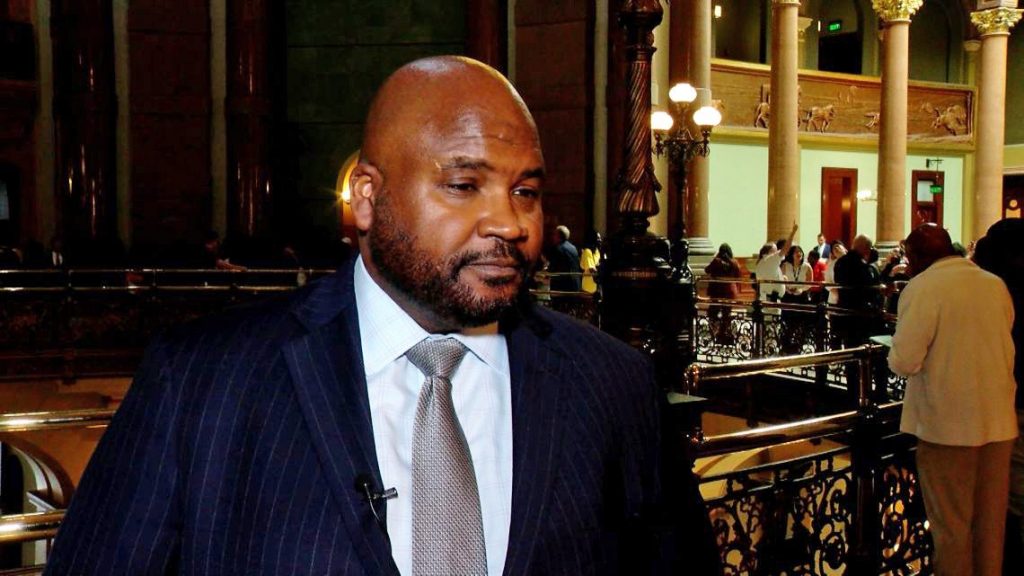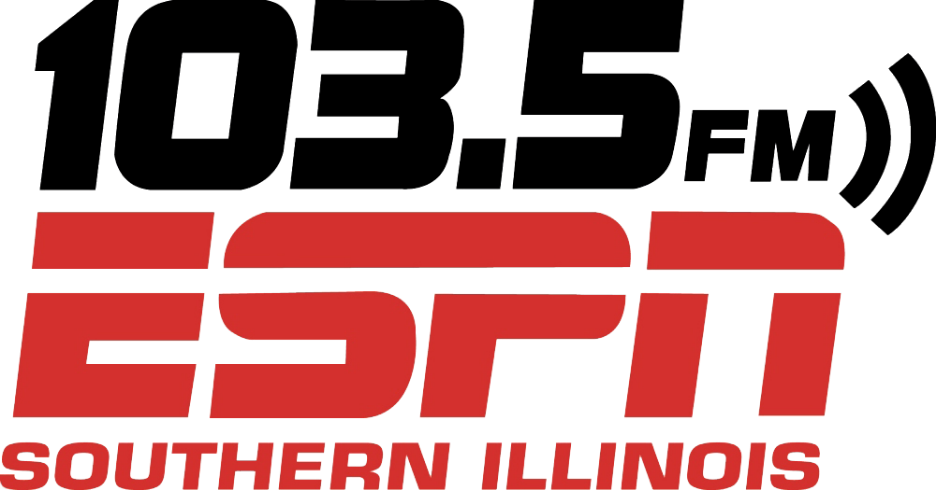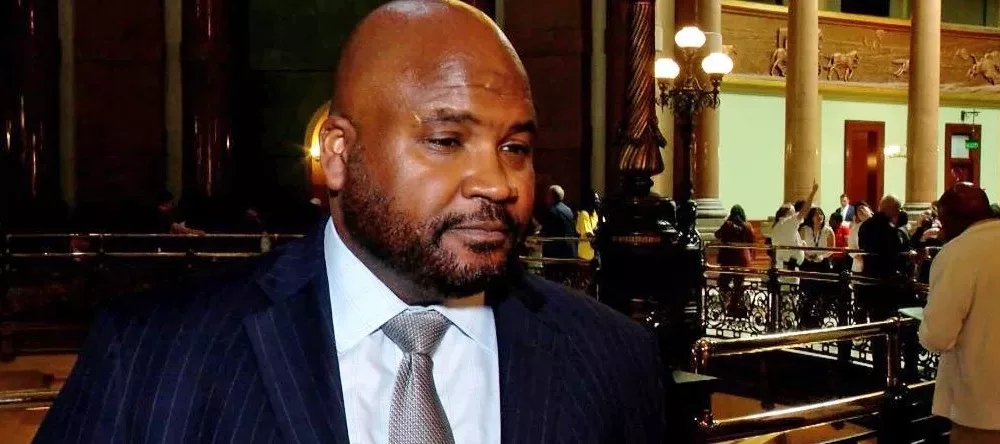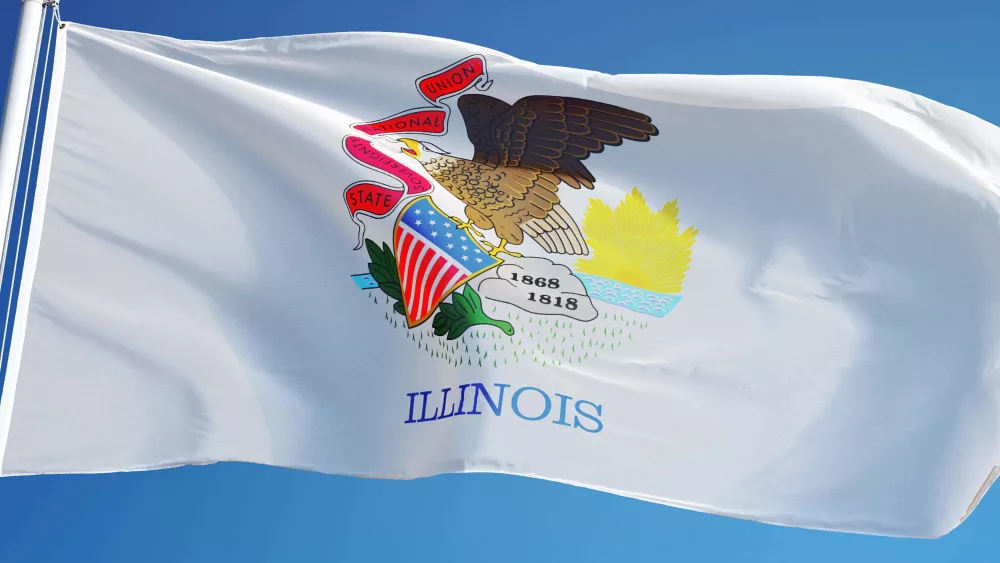
By BEN SZALINSKI
Capitol News Illinois
bszalinski@capitolnewsillinois.com
SPRINGFIELD — Gov. JB Pritzker’s office is now projecting state revenues to come in about a half-billion dollars below the baseline projections assumed during his February budget address.
The latest downward revision comes as lawmakers are entering the final two-week stretch to approve a budget before their May 31 deadline amid increasing economic uncertainty.
While Pritzker’s office blamed changes made by the Trump administration for revenue shortfalls, the new fiscal reality is almost certain to make passing a budget more difficult as lawmakers are forced to consider approving new revenue streams or cutting state programs to make up the difference.
The Governor’s Office of Management and Budget lowered revenue projections for fiscal year 2026, which begins July 1, by $536 million from its February estimate. It’s a 1% decrease that puts the state on track to finish FY26 with $54.9 billion in revenue.
The change “is largely driven by the economic uncertainty and anxiety fueled by the Trump Administration and Republicans in Congress,” Deputy Gov. Andy Manar said in a statement.
“Their reckless economic policies have already triggered the first quarterly decline in the nation’s Gross Domestic Product (GDP) in three years and are driving up costs for working families,” Manar added. “This growing national instability poses a serious risk to Illinois’ continued economic progress and outlook.”
Income tax, federal funding changes
Projections for income and sales tax revenue in FY26 were lowered by 1% since February while corporate income tax expectations decreased by nearly 7%.
GOMB’s projection more closely aligns with a revision issued earlier this month by the Commission on Government Forecasting and Accountability, the General Assembly’s bipartisan forecasting commission. COGFA’s May 2 forecast projects FY26 will see $54.5 billion in revenue, compared to the $54.9 billion forecast by GOMB.
The roughly $400 million difference between COGFA’s and GOMB’s is driven by the fact that GOMB’s latest estimate includes tax code changes sought by the governor that will raise revenue beyond what’s in current law. Pritzker proposed a tax increase on electronic gambling and table games at casinos, pausing a transfer of sales tax revenue from motor fuel sales to the road fund, and providing temporary amnesty for individuals making delinquent tax payments.
Pritzker’s office decreased federal revenue expectations for FY26 by about 2%, but COGFA lowered expectations by more than 6%.
Pritzker in February proposed a $55.2 billion spending plan that would be fueled by $55.5 billion in revenue, including the proposed revenue changes. But now lawmakers must work to fit their spending priorities into a smaller window that was already tight. Pritzker’s introduced budget called for 1% spending growth in most areas of the budget outside education, pensions and health care costs.
Senate Democrats’ budget leader, Sen. Elgie Sims, D-Chicago, said he believes the governor’s office’s adjustment keeps with its recent tradition of “responsible and conservative revenue estimating” and that Pritzker was not too aggressive when he introduced his budget in February.
“It was looking at the information available at the time,” Sims said in an interview. “He made an adjustment call. After having more real data, he changed the estimate to reflect that.”
House Republicans’ budget leader, Rep. Amy Elik, R-Godfrey, said Pritzker’s adjustment was “sensible,” but he should have been aware of President Donald Trump’s plans and accounted for their effects when he introduced his budget. She added the state budget has also relied too much on federal funds to pay for state programs.
“We are now in a situation where we have so much reliance on the federal government that any little cut feels like a very big deal to Illinois,” Elik said in an interview.
Special session needed?
The Trump administration has made the budgeting process “much more difficult,” Sims said, and it is possible lawmakers will need to come back later this year to make changes to any budget passed this month.
“We have no idea what the federal government is going to do,” Sims said. “This is the most uncertainty we’ve had in a very long time. So it’s possible. Is it the preferred outcome? Absolutely not, but is it a possibility? Sure.”
Both Sims and Elik said lawmakers need to look closely at what the state is spending to make decisions about how to balance the budget with minimal revenue growth and without hurting key services.
“We’re looking at every line,” Sims said. “This is that point of the session where we gather information.”
Some Republicans are seeking to slash significant portions of the state budget. Rep. Jed Davis, R-Newark, a member of the far-right Freedom Caucus, suggested the budget could be reduced by $10 billion, but many of his recommendations eliminate capital projects that are not part of the $55 billion general fund budget. He also suggested reducing pension contributions that are required by law.
Elik was more measured when discussing potential cuts.
“You can’t just do an across-the-board reduction of state spending,” she said. “I wouldn’t recommend that in any way. So I think you go department by department and line by line.”
Projections for the current FY25 budget that ends June 30 remain largely in line with expectations on the revenue end, although spending has outpaced revenues.
Both COGFA and GOMB expect the state will close the year with $53.9 billion in revenue, though corporate and sales tax income will end slightly lower than expected.
Spending for the year is so far trending 4% higher than what lawmakers budgeted for, according to GOMB, but nearly all of this comes from higher-than-expected pension payments. Recently enacted state law allows the comptroller to “pre-pay” pensions, meaning the comptroller can make pension payments earlier in the fiscal year. Generally speaking, that means spending could fall more in line with revenues as the fiscal year progresses.
Further cuts from Congress?
Congressional budget talks taking place this month could mean further cuts to federal funding for the state.
Congress is considering a plan that includes some substantial cuts to Medicaid and federal health care programs, including a 10% cut to the federal matching rate for states that provide health care coverage for undocumented immigrants.
Pritzker proposed eliminating a health care program for noncitizens ages 42-64 to save the state $330 million in FY26, but a $132 million program covering seniors remained in his proposal.
Pritzker has long warned the state will not be able to make up for any significant Medicaid cuts approved by Congress.
“The Governor has made it clear: he will only sign a balanced budget,” Manar said. “At the same time, he has warned of the devastating impact on working families if Trump and Congressional Republicans succeed in their cruel cuts (to) Medicaid, SNAP, and other critical safety net programs.”
Capitol News Illinois is a nonprofit, nonpartisan news service that distributes state government coverage to hundreds of news outlets statewide. It is funded primarily by the Illinois Press Foundation and the Robert R. McCormick Foundation.





